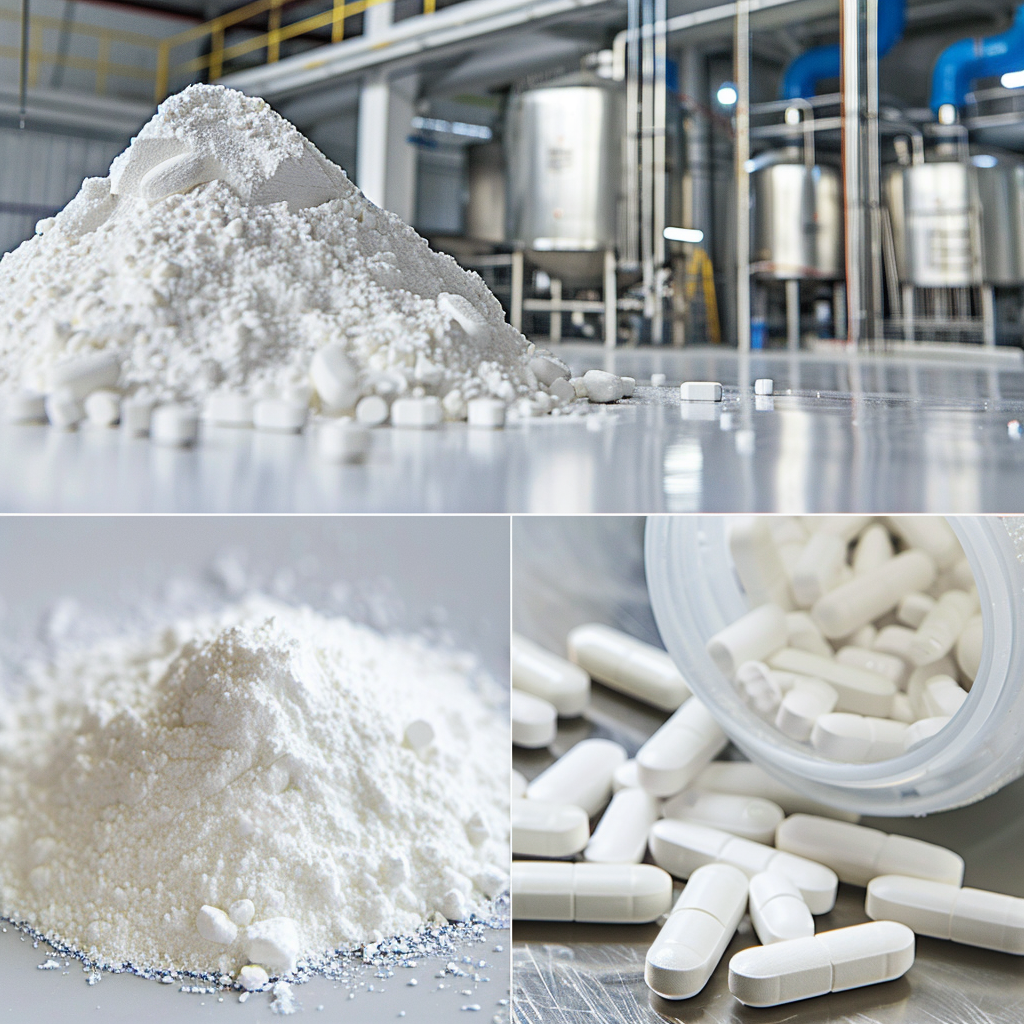As the global aging population continues to rise, Nicotinamide Mononucleotide (NMN) has become a popular supplement due to its potential in boosting NAD+ (Nicotinamide Adenine Dinucleotide) levels, slowing down aging, and promoting brain health. However, with various manufacturing methods available, it’s crucial for wholesalers and supply chain managers to choose the most cost-effective and marketable production process. Different production methods vary in terms of cost, yield, environmental impact, and final product quality. This article will provide a detailed comparison of the four main NMN production methods, helping wholesalers make the most informed decisions when selecting suppliers.

Chemical Synthesis
Overview:
Chemical synthesis is one of the traditional methods used to produce NMN. This method generally involves the use of chemical reagents, such as zinc reactions, to synthesize NMN. While this method allows for high production yields, it comes with high costs and potential environmental impacts.
Advantages:
- High Yield: Chemical synthesis can produce a large quantity of NMN, making it suitable for mass production.
- Mature Technology: The process is well-established and stable, with a long history of usage.
Disadvantages:
- High Costs: The chemical reagents and production process are expensive.
- Environmental Impact: The waste produced during chemical synthesis can be harmful to the environment.
- Low Bioavailability: Chemical synthesis often results in a mixture of L- and D-forms of NMN. The D-form is biologically inactive, reducing the product’s overall effectiveness.
Supporting Data:
- Makarov & Migaud (2019) pointed out that chemical synthesis results in both L- and D-forms of NMN, which significantly lowers bioavailability and effectiveness.
Bacterial Fermentation
Overview:
Bacterial fermentation offers a more environmentally friendly and cost-effective alternative to chemical synthesis. In this method, genetically modified bacteria, such as E. coli, are used to produce NMN by consuming glucose and nicotinamide.
Advantages:
- Lower Costs: Bacterial fermentation is more affordable and scalable than chemical synthesis.
- Environmentally Friendly: This method uses fewer chemical reagents and produces minimal waste, making it a greener option.
- High Yield: With modern bioreactor technology, bacterial fermentation can produce large quantities of NMN.
Disadvantages:
- Longer Production Time: Fermentation takes more time compared to chemical synthesis, with production requiring up to 24 hours.
- Purity Issues: NMN produced through fermentation may require additional purification steps to remove impurities.
Supporting Data:
- Kafle et al. (2023) demonstrated that genetically modified E. coli in a bioreactor could produce 19.3g/L of NMN, showing it to be a highly efficient production method with a good yield.
Enzymatic Conversion
Overview:
Enzymatic conversion involves the use of Nicotinamide Riboside (NR) as the precursor, which is converted into NMN through the action of the Nicotinamide Riboside Kinase (NRK) enzyme. This method provides high purity and is efficient but requires expensive ATP.
Advantages:
- High Yield: Enzymatic conversion can achieve high NMN output, often higher than bacterial fermentation.
- Purity: This method produces almost pure L-form NMN, ensuring superior bioavailability.
Disadvantages:
- High ATP Cost: ATP is required for the reaction, and it is expensive. For example, 10 grams of ATP costs around $629, which raises production costs.
- Technically Demanding: The enzyme selection and reaction conditions need precise control, making it a more complex process.
Supporting Data:
- Qian et al. (2022) reported that K. marxianus fungal-derived NRK enzymes, combined with an ATP supplementing enzyme, achieved an NMN yield of 281 g/L per day, far surpassing bacterial fermentation’s 19.3 g/L.
Dual+ Enzyme Method (Japan’s Advanced 3rd-Generation Technology)
Overview:
Japan’s W+NMN production uses a dual+ enzyme method that combines enzyme conversion and fermentation. This method mimics the body’s natural enzyme processes, ensuring high-purity, environmentally-friendly NMN production. It is a more complex method but offers superior bioavailability.
Advantages:
- Ultra High Purity: The NMN produced is almost 100% L-form, ensuring maximum bioavailability and effectiveness.
- High Efficiency: This method offers better production efficiency than traditional methods while maintaining a greener production process.
- Additional Health Benefits: W+NMN includes a proprietary ingredient called “Endolite Awakening Factor,” which enhances the effectiveness of NMN by activating the Sirtuins longevity proteins in the body.
Disadvantages:
- Complex Process: The dual+ enzyme method is more complicated and requires more steps, which increases production time.
- Lower Yield: Due to its complexity, the production yield is lower than bacterial fermentation or chemical synthesis.
Supporting Data:
- According to W+NMN (2023), the dual+ enzyme method produces 10x faster absorption, releasing the Endolite Awakening Factor to activate Sirtuins, leading to immediate absorption and effects within 72 hours.
Conclusion: Which Production Method is Best for Wholesalers?
For wholesalers, the choice of NMN production method is crucial in determining cost, market competitiveness, and product quality.
- Bacterial Fermentation is the most cost-effective and scalable option for large-scale production but may have issues with purity and slower production time.
- Chemical Synthesis offers high yields, but its high cost and potential environmental impact may make it less attractive for long-term sustainability.
- Enzymatic Conversion provides high purity and bioavailability, but the high cost of ATP makes it less cost-effective.
- Dual+ Enzyme Method (Japan’s W+NMN) offers the highest purity and bioavailability but at a higher cost and lower yield. This method is ideal for companies looking for premium products with advanced benefits.
Wholesalers looking for the best balance between cost-effectiveness, quality, and sustainability should consider bacterial fermentation or enzymatic conversion methods. However, for premium, high-performance products, the dual+ enzyme method could offer a competitive edge.
Sources
- Makarov & Migaud (2019). “Chemical Synthesis of NMN”. Beilstein Journal of Organic Chemistry.
- Kafle et al. (2023). “Bacterial Fermentation for NMN Production”. Bioresource Technology.
- Qian et al. (2022). “Enzymatic Conversion of Nicotinamide Riboside to NMN”. Bioresource and Bioprocessing.
- W+NMN (2023). “Production and Effectiveness of W+NMN”. W+NMN Official Report.